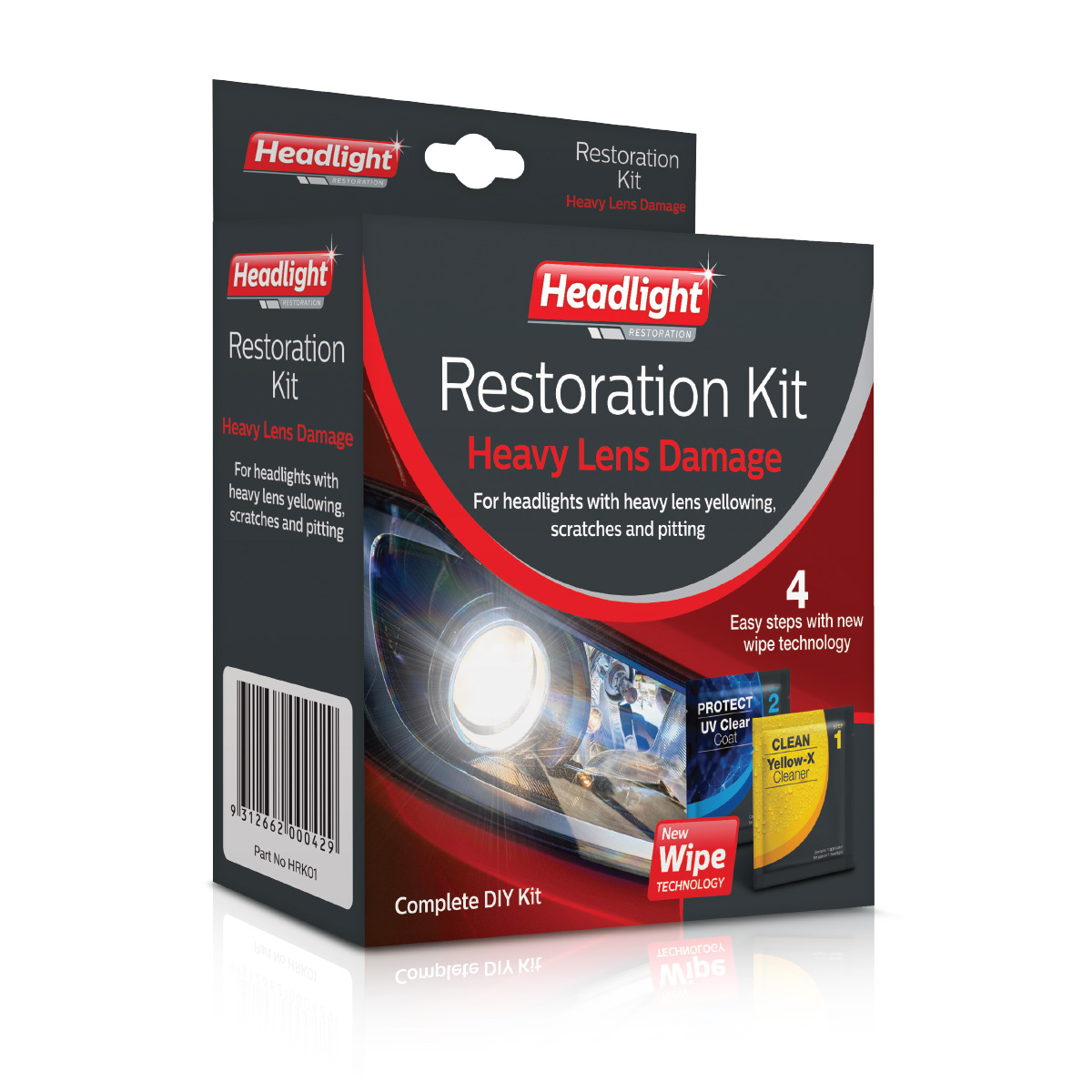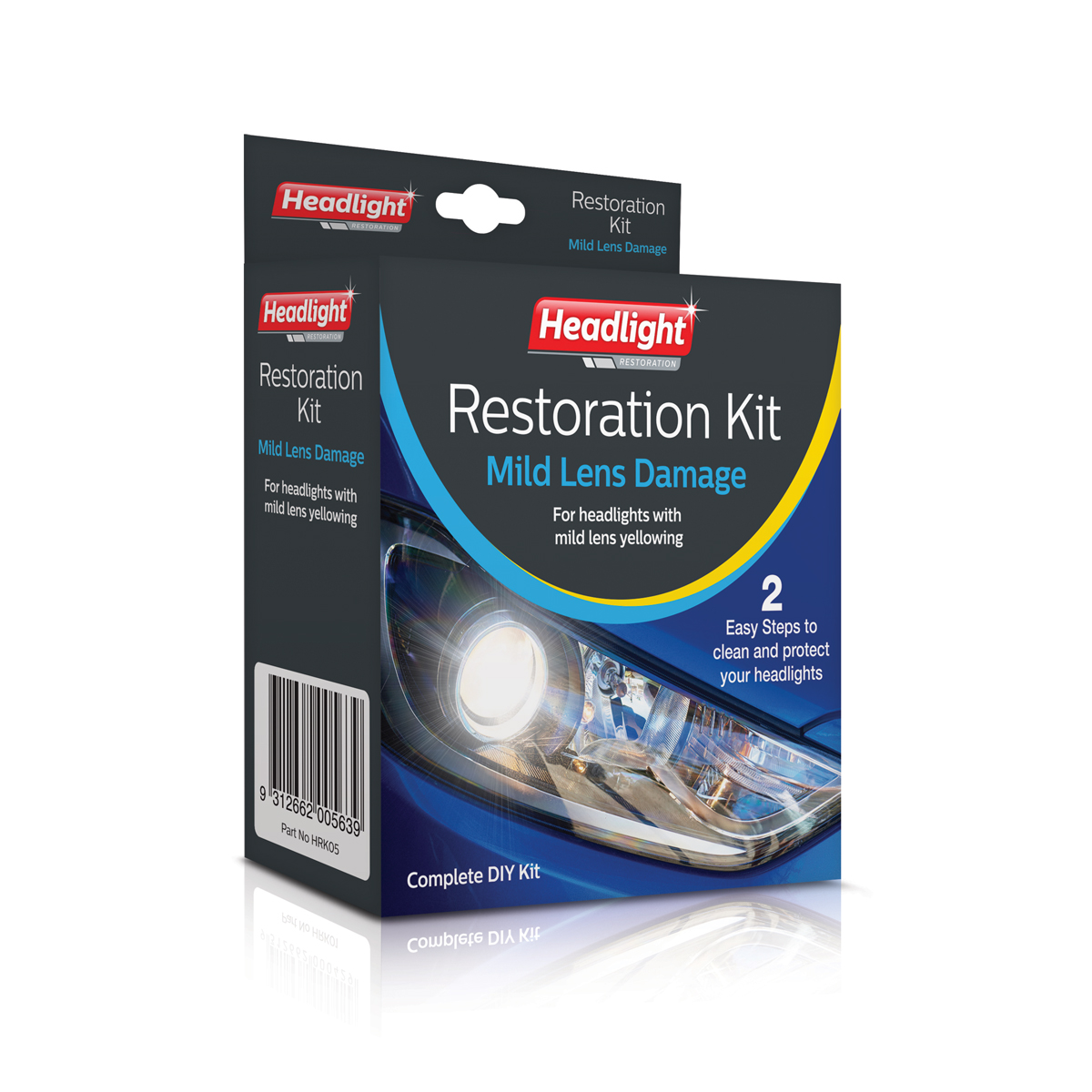
Everything you need in one little package to turn your headlights back into the clear, visible and effective items that they once were. There are some DIY methods, some that we’ll discuss with you shortly, but the beauty of a kit is the time saved, and the end result greatly surpassing anything any form of restoration you could do on your own. One box, usable, on average, for up to three cars, and a better shine than when it rolled off the assembly line.


Your headlights are going to yellow—it’s a fact, sorry to say. When it yellows, it’s a product of oxidation. Harmful UV rays come in to damage your headlight casings, but with a restoration kit, you’re doing far more than just cleaning it up—you’re also reapplying the UV protection coating, slowing the damage of harmful rays in the future.
Depending on where you live, you’ll also run into a few others problems that add to their discoloring (and general damages that could require repair or replacement). If you’re in an area that has seasonal weather conditions in winter, rock salt is eating away at the casings for your headlights. Apart from that, it’s scratching it up, and creating deep crevices that become discolored as well. If enough damage has been sustained, then they may need to be replaced entirely.
Additional issues that may cause discoloration or damage to your headlights are chemical-related. Spraying insecticides or any other type of chemicals can damage, discolor, and even warm your headlights. If you’re spraying for bugs around your yard, throw a tarp down over the car before you do anything. Same goes for cutting your lawn with any type of mower or whacker—you’ll want to cover up so debris and airborne particles from clippings don’t attach to, and damage your car.
In short, yes. It’s not a common occurrence, and most mechanics will let your vehicle go as long as it meets the standard safety requirements. However, your headlights are a safety concern for yourself as well as the public and other drivers.
When your headlight output is diminished enough, you’re not as visible to other drivers, pedestrians, or even wildlife. If there is a significant amount of yellowing, haziness or fogged plastic/glass, you may get slapped with a rejection sticker. The easiest way to avoid this is just by cleaning your headlights yourself before you even bring it in for an inspection.

Dry, hot climates require additional protection against harmful UV rays. Light reflects off of sand, light dirt and concrete; between that and the lack of humidity to cut through, 100% of the potential UV damage occurs on your headlights. If you live in states like Queensland, NT or WA, you’ll notice yellowing of the headlights at a far faster rate. Plan ahead, and get a headlight restoration kit with additional UV protection as a preventative measure, as well.
If you’re not using an entirely new restoration kit, utilization of these four materials are all excellent ways to clean your lenses. Here’s the shocker—they’re all bought on a child’s allowance.
Every vehicle and circumstance is different. Living near heavily salted roads, gravel pathways, and failing to cover your vehicle when you spray pesticides, can all result in damage to your headlights. As a rule of thumb, you should use a headlight restoration kit once per year, at the most mild season of use.
If you live in humid climates, wait until a dry day. One use per year should leave your headlights shining brightly with little to no problems for the rest of the year. When you approach the one-year mark, use it as a maintenance/prevention method. For spending between twenty and thirty dollars, depending on which kit you go with, you’re doing a lot of good for your car instead of paying money out the nose for a full replacement or doing the job yourself.
Plastic, which makes up your headlight’s primary body, is very prone to absorbing things in its environment. Despite being made of the central polycarbonate material that just about every headlight is made of, it’s still plastic and therefore succumbs to the problems plastic faces.
|
FREE TO JOIN Membership is FREE, Members Save big for nothing |
|
DON’T PAY RETAIL Members have site-wide pricing discounts on all products! |
|
MEMBER ONLY SALES Member only sales with up to 75% OFF and exclusive Member only giveaways |
|
MEMBER UPDATES Members will be updated on new and upcoming sales before anyone else |
Follow us on Social Media